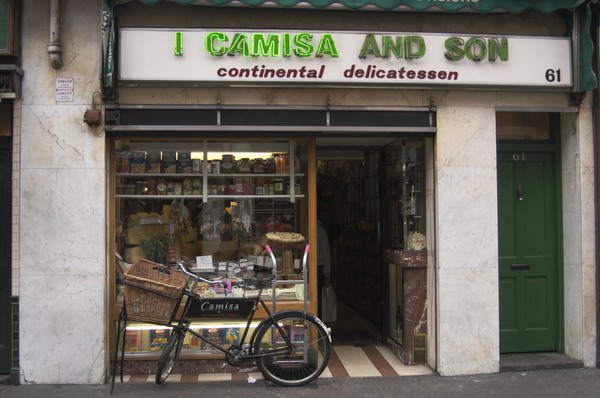I don’t spend a lot of time in Soho, though it’s one of London’s more interesting areas, with an atmosphere of its own. As the Soho Society, formed in 1972 when the whole area was in danger from comprehensive redevelopment states, it is “a remarkable square mile with a remarkable history.” Thanks largely to their efforts, Soho was made a Conservation Area, and although continually under threat, much has survived.
Much of its character comes from the many small businesses there covering a huge range of goods and services, both for the trade and the general public. Unlike most of the rest of London (and other cities and towns) it has largely resisted the chains and franchises, although there are a few, mainly on the major roads that cut through or surround the area. Tourists flock to Chinatown – and so do London’s Chinese population, but it’s also a great place to buy Italian groceries (and perhaps the best sandwiches in London.) And so much more.
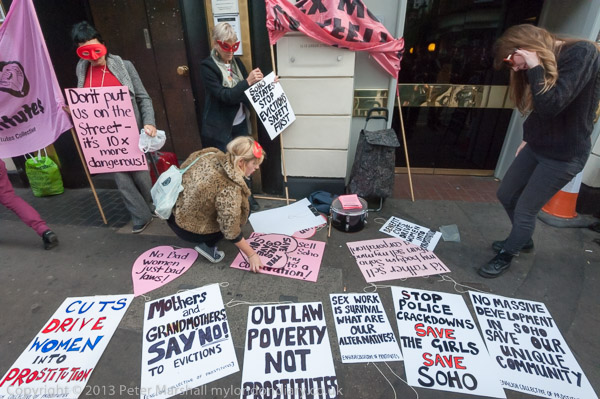
Soho has also a reputation for sex, and as well as various clubs and bars catering for various tastes, there are still open doors on some streets sometimes with a red light and a small card, ‘Model upstairs’. ( I assume this doesn’t refer to, say a model train, but can provide no first-hand information.) Years ago while walking through the area it was common for young (and not so young) ladies to come up to you, perhaps to ask if you had a light for their cigarette, or simply to ask “Looking for a good time, Dearie?” but now such business is apparently more often conducted by phone. ‘Working Girls’ as they are now styled can work much more safely from a flat, with added protection from the presence of a ‘maid’, often an older woman who has retired from the ‘game’. Or so I’m told. Personally it isn’t a trade I’ve ever thought to patronise, and I have some sympathy with campaigners who want to make paying for sex by men (or women) an offence.
Prostitution is not illegal, but pimping and brothels are, and more than one sex worker in a flat or house makes that into a brothel. The image above isn’t a great picture, but one that (literally) spells out rather clearly the problem. Women turn to prostitution as a way to make a living, often in desperate circumstances where they have few alternatives. It is a traditional occupation and fits in to Soho with few problems where it is a business run by the women involved. Police crackdowns on legally working prostitutes are largely prompted by those who wish to empty properties and redevelop the area.
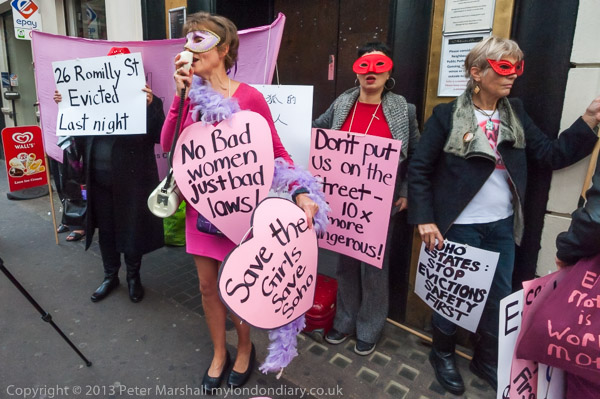
Of course police should have a role in the matter. There is exploitation, women who are trafficked and many truly terrible things happening in the sex industry in Soho as elsewhere in London, and the police should be cracking down on it, getting evidence, arresting those responsible, taking them to court and getting convictions. But unfortunately we see very little of this. Instead they pick on the easy meat, where they can get results without having to have any evidence or take anything to court.
Police sent a threatening letter to Soho Estates, the landlord of a block in Romilly St, threatening them with prosecution for allowing their property to be used as brothels. Soho Estates then pressured the lease-holder to evict the women, who were apparently all working singly and thus legally in self-contained flats. And they were evicted. The police can chalk up a success, and the developers, here and elsewhere, have empty buildings they can attempt to redevelop. There are still some on Westminster council who would like to see Soho disappear (and are perhaps rubbing their hands at the thought of the profits they could make from it.)
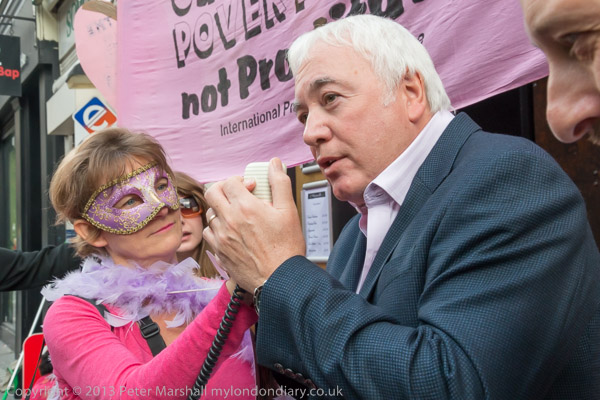
It was a popular protest with the press, with women (many if not most not themselves prostitutes but supporters of their case) wearing masks adding to the attraction. It was also unusual, in that the boss of Soho Estates, John James (the son-in-law of the late Paul Raymond) came out with a colleague to try and justify his actions, saying the police had left him with no alternative. He was allowed to have his say, but it wasn’t an argument that cut ice with those protesting, who suggested he should have called the police bluff, as they had no evidence in support of their case.
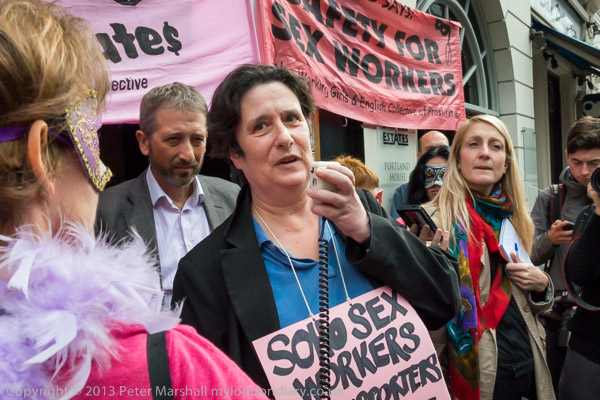
The protesters gave a much warmer welcome to a woman from the Soho Society, who came to give her support for them. Many of the women involved have families in the area and are respected as residents, carrying on one of its traditional trades, in a way that causes little if any nuisance to others who live around. Women who work in flats contribute to the local economy and are a part of what gives Soho its unique character; taking prostitution off the streets improves the area and is ten times safer for the sex workers.
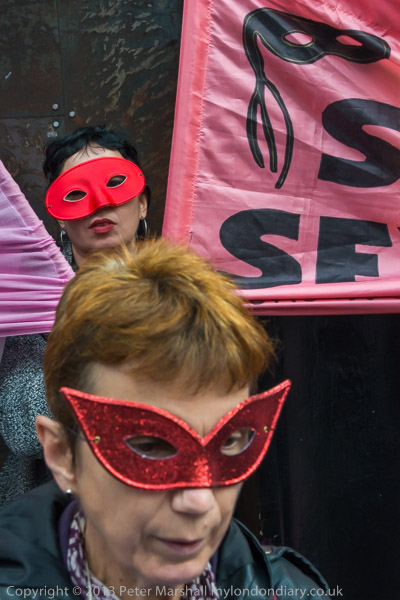
More about the event and more pictures at Police & Developers Evict Soho Working Girls.
______________________________________________________
My London Diary : Buildings of London : River Lea/Lee Valley : London’s Industrial Heritage
All photographs on this and my other sites, unless otherwise stated, are taken by and copyright of Peter Marshall, and are available for reproduction or can be bought as prints.
To order prints or reproduce images
________________________________________________________
